Nebirau II
De Wikipedia, la enciclopedia libre
Neferkara Nebiraura, o Nebirau II, fue un faraón de la dinastía XVII, que gobernó c. 1582-1582 a. C.[1]
El Canon Real de Turín (11.6), legible, indica su nombre: (Nebiryautra) 5..., con un corto periodo de reinado, cinco meses.
Se ha sido sugerido que la doble mención de su nombre en el Canon de Turín es accidental y sólo habría habido un rey Nebirau.
En opinión de A. Leahy un sarcófago de Osiris, atribuido a Nebirau II, y descubierto en la tumba del faraón Dyer, en Abidos, y el sello de la Isla de Uronarti en Nubia, pertenecieron al rey Jendyer, de la dinastía XIII.
Titulatura [editar]
| Titulatura | Jeroglífico | Transliteración (transcripción) - traducción - (procedencia) |
| Nombre de Horus: |
| ḏd ḫpru (Dyedjeperu) Firmes manifestaciones |
| Nombre de Nebty: |
| ḏd msut (Dyedmesut) Firme... |
| Nombre de Hor-Nub: |
| b3 (?) nfr (?) (Ba Nefer) (?) Bello es el espíritu... |
| Nombre de Nesut-Bity: |
| nfr k3 rˁ (Neferkara) Bello es el espíritu (Ka) de Ra |
| Nombre de Sa-Ra: |
| nb iry r 3u (Nebiryrau) El Señor de todos |
| Nombre de Sa-Ra: |
| nb i r y 3 u t rˁ (Nebiryautra) El Señor de todos es Ra (Canon Real de Turín 11.6) |
Referencias [editar]
- Notas
- ↑ Franke
- Referencias digitales
- http://www.narmer.pl/dyn/17en.htm (en inglés)
- J. von Beckerath, 1997: Dinastía XVII (en inglés)
- K.S.B. Ryholt, 1997: Dinastía XVII (en inglés)
| Predecesor: Nebirau I | Faraón Dinastía XVII | Sucesor: Semenenra |
En otros idiomas
Galería de Hans Ollermann
Queen Hatshepsut (1479-1458 B.C.)
2004_0312_120459AA-Hatshepsut.
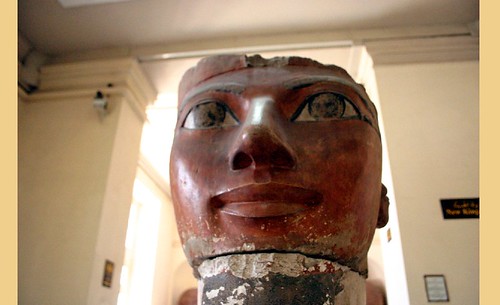
Photographed in 2004, when camera's were still welcome in the Egyptian Museum, Cairo.
Nowadays photography in this superb museum is made impossible
Hans Ollermann  dice:
dice:
Yes, John. I give some more information about this item:(information from "Egyptian Treasures from the Egyptian Museum in Cairo" book, edited by Francesca Tiradritti)
Hans
Publicado hace 25 meses
2007_0826_104405AA
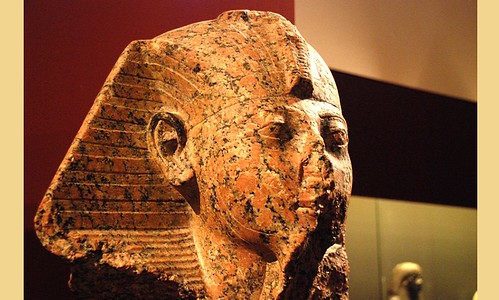
Red granite.
From Deir el Bahari, Thebes.
Circa 1470 B.C.
Egyptian Museum Munich.
(Staatliches Museum Ägyptischer Kunst).
2007_0826_104354AA
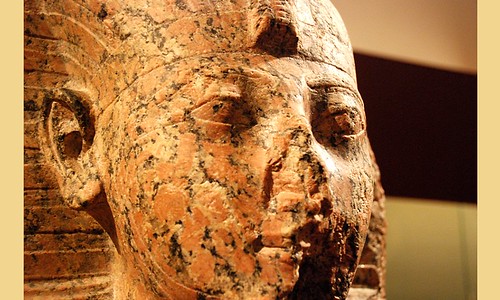
Red granite.
From Deir el Bahari, Thebes.
Circa 1470 B.C.
Egyptian Museum Munich.
(Staatliches Museum Ägyptischer Kunst).
2007_0826_104348AA
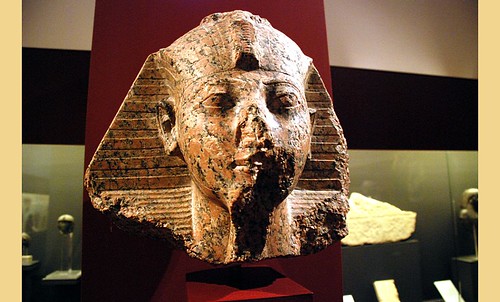
Red granite.
From Deir el Bahari, Thebes.
Circa 1470 B.C.
Egyptian Museum Munich.
(Staatliches Museum Ägyptischer Kunst).
2007_0826_104324AA
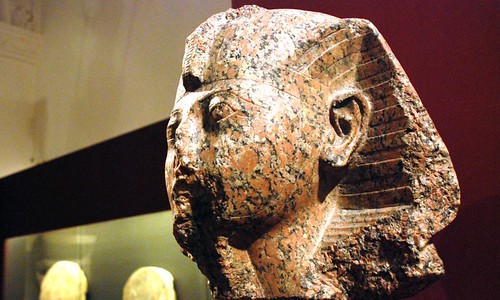
Red granite.
From Deir el Bahari, Thebes.
Circa 1470 B.C.
Egyptian Museum Munich.
(Staatliches Museum Ägyptischer Kunst).
2007_0727_170555AA
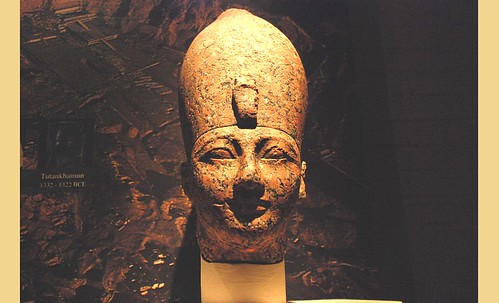
Dynasty 18, reign of Tuthmosis III (1479-1425 B.C.).
Known as the "Napoleon of Ancient Egypt", Tuthmosis III began his reign under the regency of his aunt, the female pharao Hatshepsut.
Credited with founding Egypt's empire, Tuthmosis III here wears the white crown of Upper Egypt.
University of Pennsylvania Museum,
Philadelphia.
2007_0727_170606AA
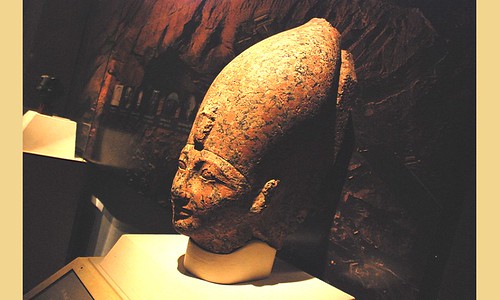
Dynasty 18, reign of Tuthmosis III (1479-1425 B.C.).
Known as the "Napoleon of Ancient Egypt", Tuthmosis III began his reign under the regency of his aunt, the female pharao Hatshepsut.
Credited with founding Egypt's empire, Tuthmosis III here wears the white crown of Upper Egypt.
University of Pennsylvania Museum,
Philadelphia.
2007_0727_170547AA
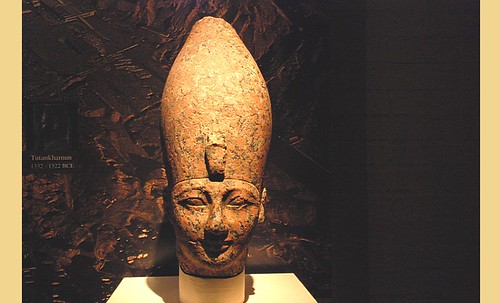
Dynasty 18, reign of Tuthmosis III (1479-1425 B.C.).
Known as the "Napoleon of Ancient Egypt", Tuthmosis III began his reign under the regency of his aunt, the female pharao Hatshepsut.
Credited with founding Egypt's empire, Tuthmosis III here wears the white crown of Upper Egypt.
University of Pennsylvania Museum,
Philadelphia.
2007_0727_170610AA
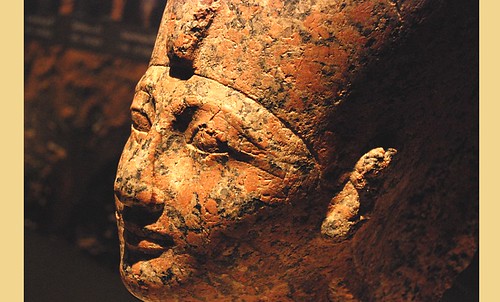
Dynasty 18, reign of Tuthmosis III (1479-1425 B.C.).
Known as the "Napoleon of Ancient Egypt", Tuthmosis III began his reign under the regency of his aunt, the female pharao Hatshepsut.
Credited with founding Egypt's empire, Tuthmosis III here wears the white crown of Upper Egypt.
University of Pennsylvania Museum,
Philadelphia.
Re: [AE-ES] EL LIBRO DE THOT
Hola a todos:
Pero a ver ¿el libro de Thot no es una leyenda? ¿un invento como lo del Libro de Amón Ra de las pelis de la Momia? Porque es lo que yo tengo entendido, y si es un mito no entiendo porque lo estamos tratando como si realmente existiera. Y si en realidad existe que alguien me ilustre sobre el tema ( y no me refiero a novelas que hablen de él, ni a lo que digan autores tipo Bauval) pues, como ya he dicho, siempre lo he tenido por una de las miles de leyendas que corren sobre Egipto.
Saludos
Mamen
##########################################
RSS Feed de Amigos de la Egiptología
http://www.egiptologia.com/index.php?format=feed&TYPE=rss
##########################################
Todo sobre las Pirámides de Egipto
http://www.egiptologia.com/todo-sobre-las-piramides.html
Recomendamos: Instituto de Estudios Arqueológicos Bíblicos
http://www.ieab.net
--------------------------------------------------------------
LISTA DE DISTRIBUCIÓN DE AMIGOS DE LA EGIPTOLOGÍA - AE
Gestión Altas-Bajas y consulta mensajes enviados:
http://www.egiptologia.com/lista-de-distribucion.html
Moderador: Víctor Rivas egiptologia@egiptologia.com
Amigos de la Egiptología: http://www.egiptologia.com
Los mensajes de Amigos de la Egiptología son distribuidos gracias al apoyo y colaboración técnica de RedIRIS Red Académica Española - http://www.rediris.es
| EGIPTOLOGÍA | |
|---|---|
| | |











![V30 [nb] nb](http://es.wikipedia.org/w/extensions/wikihiero/img/hiero_V30.png)
![M17 [i] i](http://es.wikipedia.org/w/extensions/wikihiero/img/hiero_M17.png)
![D21 [r] r](http://es.wikipedia.org/w/extensions/wikihiero/img/hiero_D21.png)


![X1 [t] t](http://es.wikipedia.org/w/extensions/wikihiero/img/hiero_X1.png)



